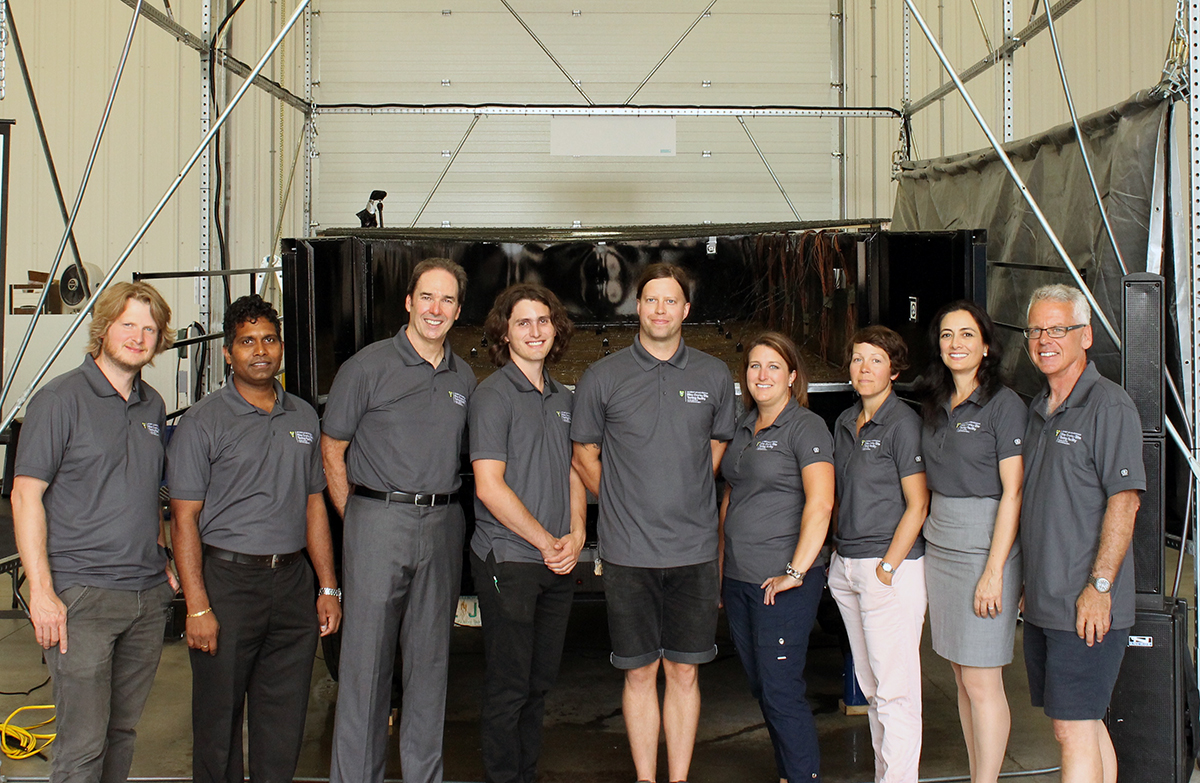
Innovation and technology showcased at MOST facility open house
Visitors at the MOST facility open house view a number of demonstrations designed to propel the development and commercialization of innovative mine waste cover systems
Though hydrologists are typically unable to control the climates they study, Jeff McDonnell has achieved the next best thing.
The GIWS associate director was on hand to unveil a new research facility that is able to simulate rainfall, freeze and thaw a patch of test ground and track water molecules using high-tech instrumentation.
It’s all part of the capabilities of the many pieces of equipment that McDonnell and the researchers at the Mine Overlay Site Testing (MOST) facility unveiled at an open house event on Thursday, July 7.
Visitors at the facility saw a number of demonstrations that are designed to propel the development and commercialization of innovative mine waste cover systems in Saskatchewan and beyond.
The MOST facility — the first of its kind in the world dedicated to mine cover system research, design and testing — will contribute to better understanding in the area of mine closures, specifically mine waste cover systems and reclamation strategies, says McDonnell.
“Mine closure is one of the largest costs of the mining enterprise—designing a cover system is complex and expensive and involves predicting how the cover responds to environmental elements,” said McDonnell.
Mine site reclamation, innovative technology and rainfall simulations were at the forefront of an event designed to propel the development and commercialization of innovative mine waste cover systems in Saskatchewan and beyond.
In addition to the demonstrations, several speakers and dignitaries were on hand at the event, including Karen Chad, U of S vice-president, research, and Lindsay Tallon, a Senior Soil Scientist with O’Kane Consultants.
“These are solutions that will ultimately be beneficial to all,” said Tallon during the opening remarks of the open house.
Construction of the MOST facility was completed in early 2016 and supported by $1.8 million from Western Economic Diversification Canada.
